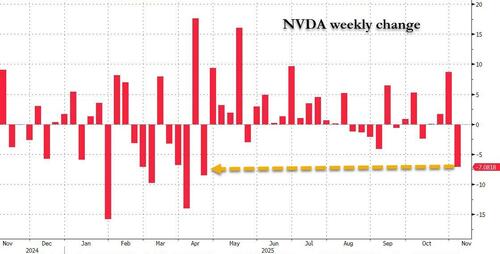Every year in March, there is an event at the India International Centre (IIC) in New Delhi called Words in the Garden. It is organised by Malvika Rai, who, along with her husband Anil, runs two universities around Delhi, and is deeply involved in education. The event focuses on the different facets of Delhi, such as ‘Ghalib ki Dilli’, ‘Meer ki Dilli’ and ‘Bapu ki Dilli’, and on the side, there are dinners which focus on Dilli ka Khana. These are curated by well-known writer and poet, Ashok Vajpayee.
Because of Covid-19, the event could not be held for the last two years, but was resumed this March. This year the theme was Dilli ki Mahilaen, the Women of Delhi. I spoke at the inaugural session, along with Ashok Vajpayee, Santwana Bhattacharya, the only women editor of a muti-edition newspaper in the country, The New India Express, and Vidya Shahi, the vice-chancellor of Rai’s university, IILM.
Delhi has seen some fascinating and powerful women. Draupadi of the Mahabharata is from Indraprastha in Delhi, which was then the capital of the Pandavas until they were sent to exile. Delhi also was ruled by the first woman head of state of the Muslim world, Razia Sultana (1205-1240). She succeeded her father, Sultan Iltutmish, and had a short but eventful reign at a time when it was almost unthinkable that a woman would lead an army of men. Her grave lies neglected and forlorn in old Delhi.
During Moghul emperor Jahangir’s reign (lived 1569-1627), the vast Moghul empire was actually run by his wife, Noor Jahan. Jahangir was an alcoholic, addicted to opium, and in poor health. Noor Jahan then ran the empire, literally from behind the purdah. The last Moghul king, Bahadur Shah Zafar’s wife, Zeenat Mahal, was also the power behind the throne, although the British had become the de facto rulers of the city, and the plight of the last Moghuls was summed up in the popular saying of that time: As dilli te Palam, Badshahat-e-Shah Alam: From Delhi to Palam, is the empire of Shah Alam (Bahadur Shah’s predecessor). When Zafar was exiled to Rangoon by the British after the great revolt of 1857, Zeenat Mahal accompanied him.
Begum Samru was another very powerful and colourful lady of the Moghul era. Born in the 1750s, she married a French mercenary, Walter Reinhardt, who served with several masters, including the Nawab of Bengal. He was killed in battle in 1776, but by then had acquired a large fortune which was inherited by Samru. Samru’s palace in Delhi was what is now known as Bhagirath Palace on Chandini Chowk. Today, it is Delhi’s premier destination for electrical goods, but was then an imposing mansion that stood in the midst of a huge and tastefully laid out garden estate. For several decades, Kothi Begum Samru was a landmark of considerable importance in Delhi, where lavish dinners were held both for the British and Indian elite.
Kamla Nehru was from Delhi. Her marriage to Jawaharlal Nehru took place at the Haksar haveli in Sitaram Bazar on 7th February 1916. Both the ruins of this haveli, and the remnants of Begum Samru’s palace, are chapters in my book: The Havelis of Old Delhi, with photographs by ace photographer, Sondeep Shankar.
After Independence in 1947, few people now remember that the first ever woman Mayor of Delhi (elected 1958) was the freedom fighter, Aruna Asif Ali, who fearlessly hoisted the Indian flag at the Gowalia Tank Maidan in Mumbai during the Quit India movement against the British in 1942. Undoubtedly, the most powerful woman in politics, who though originally from Allahabad (now renamed Prayagraj) had made Delhi her home, was Prime Minister Indira Gandhi. There is a wonderful photo by Raghu Rai which shows her seated on her desk surrounded by her bowing male Cabinet ministers holding their Gandhi caps in their hands in deference to her (which you can view here since its copyright is maintained by Magnum Photos). Another powerful politician, who had made Delhi her home, was Sushma Swaraj, who was the Leader of the Opposition in the Lok Sabha, and External Affairs minister. A remarkably eloquent speaker, she was also a very likeable person, who I knew well.
In the field of art and culture, Delhi is studded with women of great refinement and achievement. The great poet and writer, Amrita Pritam, lived in Hauz Khas. Stalwarts like Kamla Chattopadhyaya and Pupul Jayakar, who rediscovered and revived Indian textiles and crafts lived in Delhi, and their work is being continued by Laila Tyabji. Painters like Anjolie Ela Menon, Nilima Sheikh, Arpita Singh and Madhvi Parekh are residents of this city, as is Kiran Nadar, patron of artists, who set up one of the most remarkable private museums of art. The writers Arundhati Roy, Krishna Sobti and Geetanjali Shree live here. As for classical dancers of eminence, the list is too long and illustrious to name individuals.
For all of this, has Delhi achieved gender equality? I would think not. One has only to visit any construction site to see women labouring in the heat and the cold, with small children they have no option but to bring with them, and receiving wages much below that of men. A few miles outside the capital, in the larger National Capital Region, there are still Khap Panchayats, that dictate how women should behave, who they can marry, and what they should wear. It is sobering to remember that Delhi is still called the ‘rape’ capital of India.
We have a still long way to go. But let me raise a toast to those women who have nevertheless broken barriers to carve out a legacy of their own.
The Mudgal family
Words in the Garden ended with a sterling performance of Odissi dance by young Arushi Mudgal, where the talented vocalist was her sister, Sawani Mudgal. Arushi is the disciple of her aunt, one of India’s leading Odissi dancers, Madhavi Mudgal. The father of the talented young ladies is Madhup Mudgal, arguably one of India’s finest classical vocalists. It is, indeed, a remarkable family.
Pavan K Varma is author, diplomat, and former Member of Parliament (Rajya Sabha).
Just Like That is a weekly column where Varma shares nuggets from the world of history, culture, literature, and personal reminiscences with HT Premium readers
The views expressed are personal















